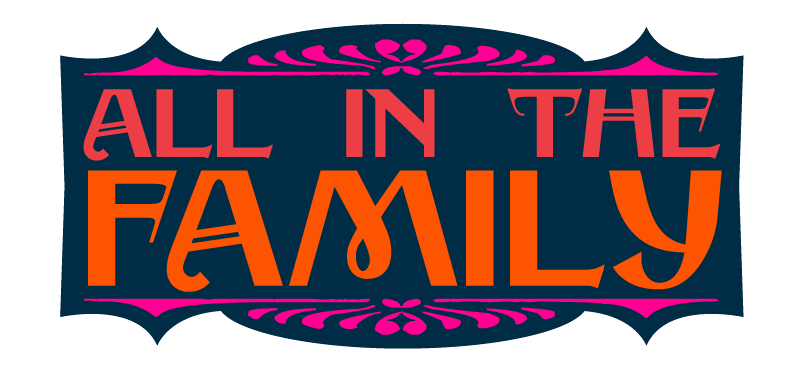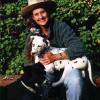
Spring '90 Profile: Ken Friedman’s Photos Are Built to Last
By Blair Jackson
In mid-August, when I call ace Bay Area photographer Ken Friedman—whose fine work graces the 25th anniversary program reprinted for the Grateful Dead: Spring 1990 box, and who took the band's official portrait for that year—he is in the thick of working on arrangements for this October's giant, free Hardly Strictly Bluegrass Festival in Golden Gate Park. This marks the eighth year Ken has been the photo coordinator for the event—he makes sure that every act on every stage is covered for still photography and hires the folks to shoot them. Needless to say, he also shoots the festival himself.
Ken has been a fixture on the Bay Area arts photography scene for three decades now, and shot the Grateful Dead extensively as a freelance photographer working for Bill Graham Presents for about half that time—from 1981 through 1995. He captured dozens of other groups for BGP over the years, and also became perhaps the preeminent live theater photographer in the Bay Area: He shot for the Berkeley Repertory Theatre for 25 years, for San Francisco's renowned American Conservatory Theatre (ACT) for 18, as well as for the San Francisco Opera and other smaller companies. "I probably didn't do as much rock 'n' roll as I could have because I always loved doing theater, too," he comments. Not bad for someone who fell into professional photography almost by accident.
He grew up in the mid-Wilshire section of Los Angeles (he went to L.A. High School) and spent his first couple of years in college at UC Santa Barbara. "That's where I originally got into the Grateful Dead," he says. "I had a dorm mate who at that point—in 1971—had an entire bookshelf full of reel-to-reel tapes. He was a serious Dead Head." Unfortunately, by the time the Dead played Santa Barbara in '73, he had dropped out of school for a year "and hitchhiked to Alta, Utah, where I worked as a fry cook and learned how to ski. What a fantastic spot in the world that is!"
After that adventure, he got his B.A. at UCLA (in political science) and moved to the Bay Area in November '76. He did manual labor jobs to make ends meet, and also worked as a counselor for developmentally handicapped kids, "but I lost my job, so one day I was walking around downtown Mill Valley looking for any job. I asked at a hardware store, but I had no experience. The guy said, 'What do you like to do?' I said, 'Well, I like to take pictures.' He said, 'Then you ought to go around the corner.' There was this new photo lab, called Iris Images, that had just opened. This multimillionaire had come into town, built a brand-new building, and put all this state-of-the-art equipment in there. The owner happened to be there, so I walked in and said I was looking for a job. 'Do you have any experience in photography?' I said, 'No, I don't.' He said, 'OK, you can start on Monday.'" Actually, Ken was a decent amateur photographer—he had a Rollei 35 camera "that I went around California shooting with." But his job at Iris was as a go-fer.
Iris Images, Ken says, "was a Canon dealer at a time when that company hadn't really quite taken off yet; professionals mostly still shot Nikon. But they had every lens that Canon made, from a 7.5 fisheye to a 1200 mm telephoto and they were all at my disposal—I could take them out and use them. They also had an E-6 [color] processor and four 4x5 enlarging darkrooms and two 8x10 rooms. I really learned a lot and I had a great deal going there, but it only lasted for six months before the guy closed the business."
Ken got his start as a music photographer casually shooting the various bands that his roommate at the time, a drummer named Ed Berman, was part of. The best-known of these was the SF new wave group No Sisters (featuring the geeky but talented Barrett brothers), who built enough of a local following that they were tagged to open several high profile shows around the Bay Area, including one in the fall of '79 featuring Joe Jackson at UC Berkeley's Zellerbach Hall. Ken was there shooting No Sisters and a chance encounter with a staffer from Bill Graham Presents led to an introduction a couple of days later with one of Bill Graham's top production lieutenants, Peter Barsotti.
"Right around that time, BGP was starting to book the Warfield Theater for the first time, so Peter hired me to shoot there. I got paid 50 bucks a show, and that included all my film and processing and delivering an 11x14 print. I made nothing; zero!" he laughs. "But within six months, when the first Day on the Green [stadium concert] came around in the summer of '80 [featuring REO Speedwagon, Sammy Hagar and Blue Oyster Cult] I was a BGP photographer.
"The first Dead shows I ever attended were at the Warfield Theater in the fall of 1980," he continues, "but I wasn't hired to be a photographer for those. In fact, I was told, 'You can't bring a camera in.' But I made it to seven [out of 15] of those shows, and I remember being in the lobby and saying, 'These guys are so good. How can Jerry be that good?' I loved it! And even though they told me I couldn't shoot, I snuck my camera in the last night I attended, and I took one frame—I was that scared; I was terrified I'd be thrown out. So, from the back of the orchestra on the house right side, I took one picture, and I have that up in my office. It turned out to be a good shot."

The concept for the cover—the dimly illuminated Dead members surrounding a house of cards—was Garcia's: "Jerry had an idea for the album cover, but he didn't feel like he could tell the band, 'Here's my idea for the album cover,'" Ken relates. "He felt like he needed to show them. So he had [his daughter] Annabelle make a card house that was like a cube of sticks that had cards plastered all over it, and we got a card table, and we got Jerry there and Annabelle, and then I got three or four of my friends to shoot a test shot, so Jerry could show it to the band, because he didn't think they'd do it unless they had something to look at."
Once the band approved the concept, Annabelle made a larger card house structure, and a photo session was arranged for the garage area of the band's Club Front studio/rehearsal space in San Rafael. "We actually did it two days in row," Ken says. "The first day, Phil had a back ache, so I have pictures of [legendary poster artist] Alton Kelley standing in for Phil. Then we did it again the next day with Phil." Ken shot it with a Hasselblad camera through a fisheye lens.
As soon as those shots were completed, "we dragged the card table off to the side, re-set the lights and then immediately did the publicity photo [which appears in the Spring 1990 box]. It was done in about ten minutes. It was a bit more rushed that I would have liked," he chuckles.
Garcia had hired Kelley to be the art director for the Built to Last cover, and his original vision, which he mocked up in a 12x12 square mimicking a record cover, included a thick border made to look like slabs of stone surrounding the photo, "with a heart, a spade, a diamond and a club embedded in each corner, and my shot of the band in this opening in the middle of the 'stone.' So, in that 12-inch space, the photograph was now going to be 6x6 or 5x6 in the middle. But when you put it on the CD, which was what most people would buy, the figures were too small and you couldn't really see them." Ken talked to Jerry about the problem and ultimately it was decided to abandon the stone motif. On the finished cover, there's just some nice Kelley lettering above the photo.
Ken's relationship with BGP ended in 1998 amid messy legal entanglements over the ownership of the photos he'd taken all those years as an independent contractor. BGP had been sold and resold a few times, and along the way their archives (of which Ken's photos were a part) were unloaded to an outside entity. Still, Ken says he's happy with the photos he was able to retain, though so far he hasn't found the time or had the inclination to do much with his incredible storehouse of images.
In the here and now, however, on this August afternoon, Ken has to get back to working on Hardly Strictly Bluegrass. This is the festival's first year since the death of founder and angel Warren Hellman, and though the event is secure for the foreseeable future, Ken admits it's been a little bittersweet carrying on in his absence. After all, one of Ken's jobs every year was to edit and assemble for Hellman three books containing a total of 1,400 prints. These books depict every act that plays the many stages of what has become one of the most-loved music events anywhere in the world. The good news is that all of these books Ken prepared for Hellman, as well as other memorabilia, will be on display for the week before and the week after HSB at what's being called the Warren Hellman Gallery, located in Boz Scaggs' old recording studio next to the popular San Francisco nightclub Slim's. "It was such a shame that he had to leave us so early," Ken says wistfully of Hellman.
The same could be said of Bill Graham and Garcia and so many others Ken has encountered in his wonderful life as a photographer, preserving the history of our times.
Check out Ken Friedman's website kenfriedmanphoto.com.


